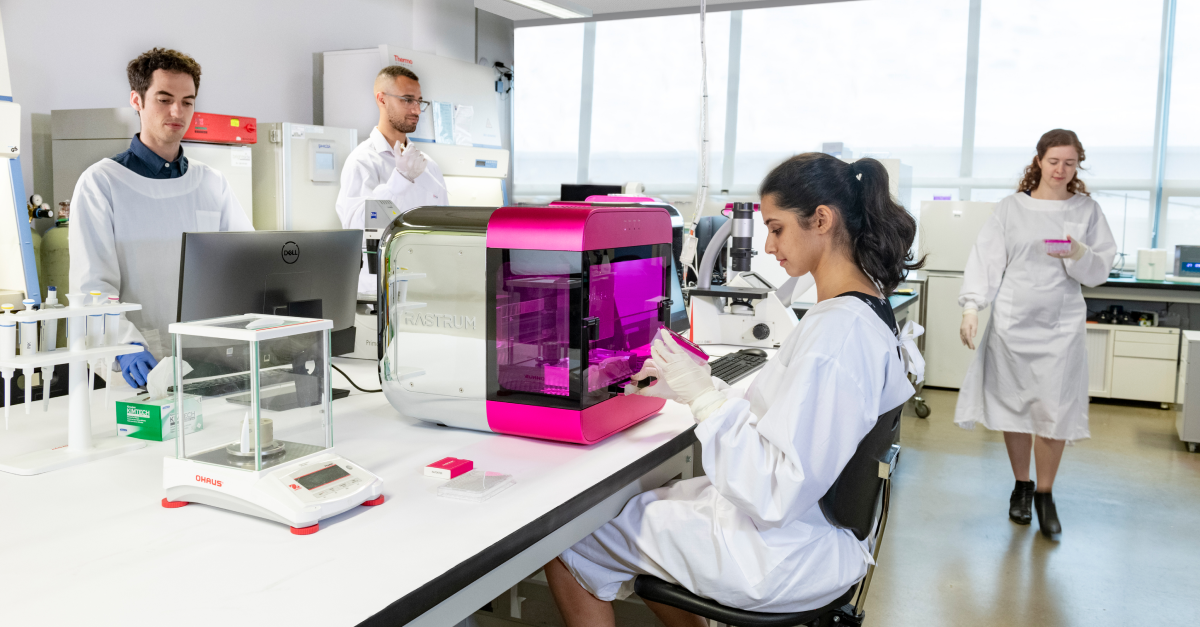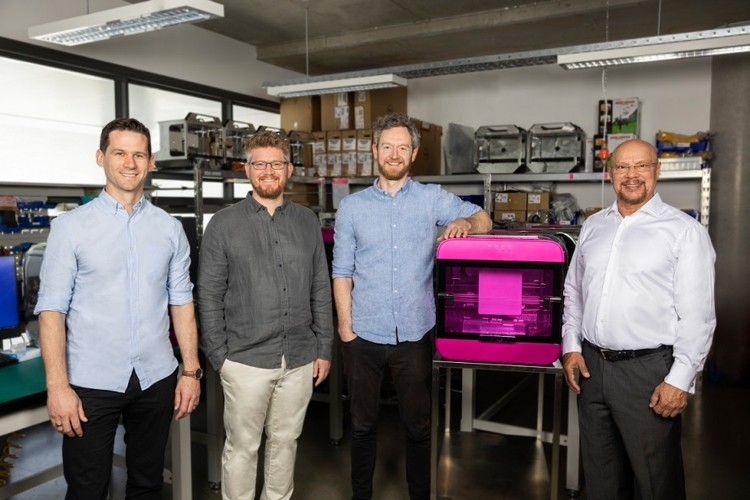Australian bioprinting startup Inventia Life Science is expanding its local footprint with support from the New South Wales (NSW) government. The Alexandria-based biotech company, a global leader in 3D cell culture and the technology to produce it, will move to new state-of-the-art manufacturing and laboratory facilities to keep pace with its expanding market worldwide. In addition, the company stated that the new hub in Sydney would support the international commercial expansion of its 3D bioprinting platform called Rastrum, ensuring it keeps pace with the machine’s demand.
Thanks to support from the NSW government’s Jobs Plus Program, the new advanced manufacturing hub in Sydney will enable Inventia’s footprint to increase from roughly 430 square meters to 1500 square meters. This dramatic infrastructure expansion will allow Inventia to boost its current manufacturing capacity as the startup transitions from an initial soft-launch phase of its Rastrum 3D bioprinter and biomaterials to a full commercial scale-up.
Expanding bioprinting access
Since launching in 2013, Inventia has grown its team to support a broad list of customers, mostly locally based in Sydney. In the last few years, it has seen a strong international and domestic demand for Rastrum from the top ten pharmaceutical companies and research institutes. Four of the best-ranked pharmaceutical companies globally use the brand’s bioprinter for drug development. Meeting this demand will initiate flow-on growth across Inventia’s technical and commercial teams.
 Scientist working at the Inventia headquarters in Sydney, Australia. Image courtesy of Inventia.
Scientist working at the Inventia headquarters in Sydney, Australia. Image courtesy of Inventia.As part of the expansion plan, Inventia will recruit 76 direct and 67 indirect full-time staff by June 2024 to support the new advanced manufacturing facility, R&D lab space, and associated commercialization activities. Jobs will be created across all Inventia’s practices, including life science, manufacturing and production, go-to-market, finance and operations, software engineering, and customer success and support. In addition, the new site is projected to become the headquarters for all of Inventia’s Australian employees, which will stand at a total of 110 people by the end of this year.
The NSW government supported Inventia through its A$250 million ($167 million) Jobs Plus Program, which helps eligible companies set up and expand their regional presence. It includes payroll relief, infrastructure support, and subsidized training programs to create and fast-track job development while simultaneously helping increase speed to market for businesses looking to scale and grow.
“We are delighted by the support we have been given by the NSW Government. As a result of the Jobs Plus grant, we have been able to scale up our production capabilities, employ more highly skilled people, including biologists, software and mechanical engineers and take this revolutionary technology to the world,” indicated Inventia’s Founder and CEO, Dr. Julio Ribeiro. “Inventia’s drop-on-demand 3D bioprinting technology is the most advanced and precise 3D printing of its kind in the world. It is well placed to consolidate Australia as a global leader in this field. These additional funds will help us cement Australia’s position and expand our global presence, as well as support training programs for new Inventia employees to upskill on knowledge in deep technical engineering and product management courses.”
On social media, the company has already provided a sneak peek of the new facility, described as “Inventurer’s home.” It shows a sleek modern internal design for the upcoming office space.
 Inventia announces new facility in Australia for manufacturing and R&D. Image courtesy of Inventia.
Inventia announces new facility in Australia for manufacturing and R&D. Image courtesy of Inventia.State support
Australia is a prime destination for life science technologies. Home to some of the best global educational institutions in the field, the country is highly ranked for its biotechnology studies programs. According to AusBiotech, the country’s life sciences sector employs over 240,000 people and accounts for A$3 billion ($2 billion) in exports yearly. Moreover, the Australian Securities Exchange (ASX)-listed Australian life sciences sector is worth roughly A$100 billion ($67 billion) and comprises about 100 companies. With its increased investments and continued government support, Australia can become a world-class destination for life science companies.
 Inventia founders with Rastrum bioprinter. From left to right: Cameron Ferris, Bob Groneman, Aidan O’Mahony and Julio Ribeiro. Image courtesy of Inventia.
Inventia founders with Rastrum bioprinter. From left to right: Cameron Ferris, Bob Groneman, Aidan O’Mahony and Julio Ribeiro. Image courtesy of Inventia.Up until now, most of Australia’s advances in bioprinting technologies have come from researchers in academia, institutes, and university hospitals, such as the University of New South Wales, the University of Melbourne, Murdoch Children’s Research Institute, Queensland University of Technology, and primarily Australia’s University of Wollongong, led by world-renowned bioprinting expert Gordon Wallace. This landscape has provided Inventia the upper hand as the premier bioprinting startup in the country, with barely any competition in the region. As a result, its flagship hot pink Rastrum system gained quick recognition at home, with an adoption base of pharma, CRO, and academic clients.
By tackling 3D cell model creation in just a matter of hours, the Rastrum can help researchers advance drug testing and longer-term regenerative medicine programs. Tackling more accurate representations of in vivo physiological conditions than 2D cell cultures, the Rastrum enables high throughput creation of 3D cell models in an efficient and reproducible way. It uses digital bioprinting technology that prints tiny droplets of cells and matrix components fast, precisely, and gently on cells.
Fresh off the opening of its first U.S. office and facility in Delaware, Inventia’s latest announcement of expanding its Australian operations further secures its position as one of the leading bioprinting startups, providing researchers with accurate biological simulations of how cells grow or respond to stimuli, like medication.
Subscribe to Our Email Newsletter
Stay up-to-date on all the latest news from the 3D printing industry and receive information and offers from third party vendors.
You May Also Like
Precision at the Microscale: UK Researchers Advance Medical Devices with BMF’s 3D Printing Tech
University of Nottingham researchers are using Boston Micro Fabrication‘s (BMF) 3D printing technology to develop medical devices that improve compatibility with human tissue. Funded by a UK grant, this project...
3D Printing Webinar and Event Roundup: April 21, 2024
It’s another busy week of webinars and events, starting with Hannover Messe in Germany and continuing with Metalcasting Congress, Chinaplas, TechBlick’s Innovation Festival, and more. Stratasys continues its advanced training...
3D Printing Webinar and Event Roundup: March 17, 2024
It’s another busy week of webinars and events, including SALMED 2024 and AM Forum in Berlin. Stratasys continues its in-person training and is offering two webinars, ASTM is holding a...
3D Printed Micro Antenna is 15% Smaller and 6X Lighter
Horizon Microtechnologies has achieved success in creating a high-frequency D-Band horn antenna through micro 3D printing. However, this achievement did not rely solely on 3D printing; it involved a combination...





























